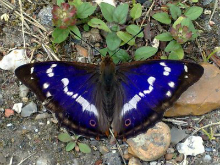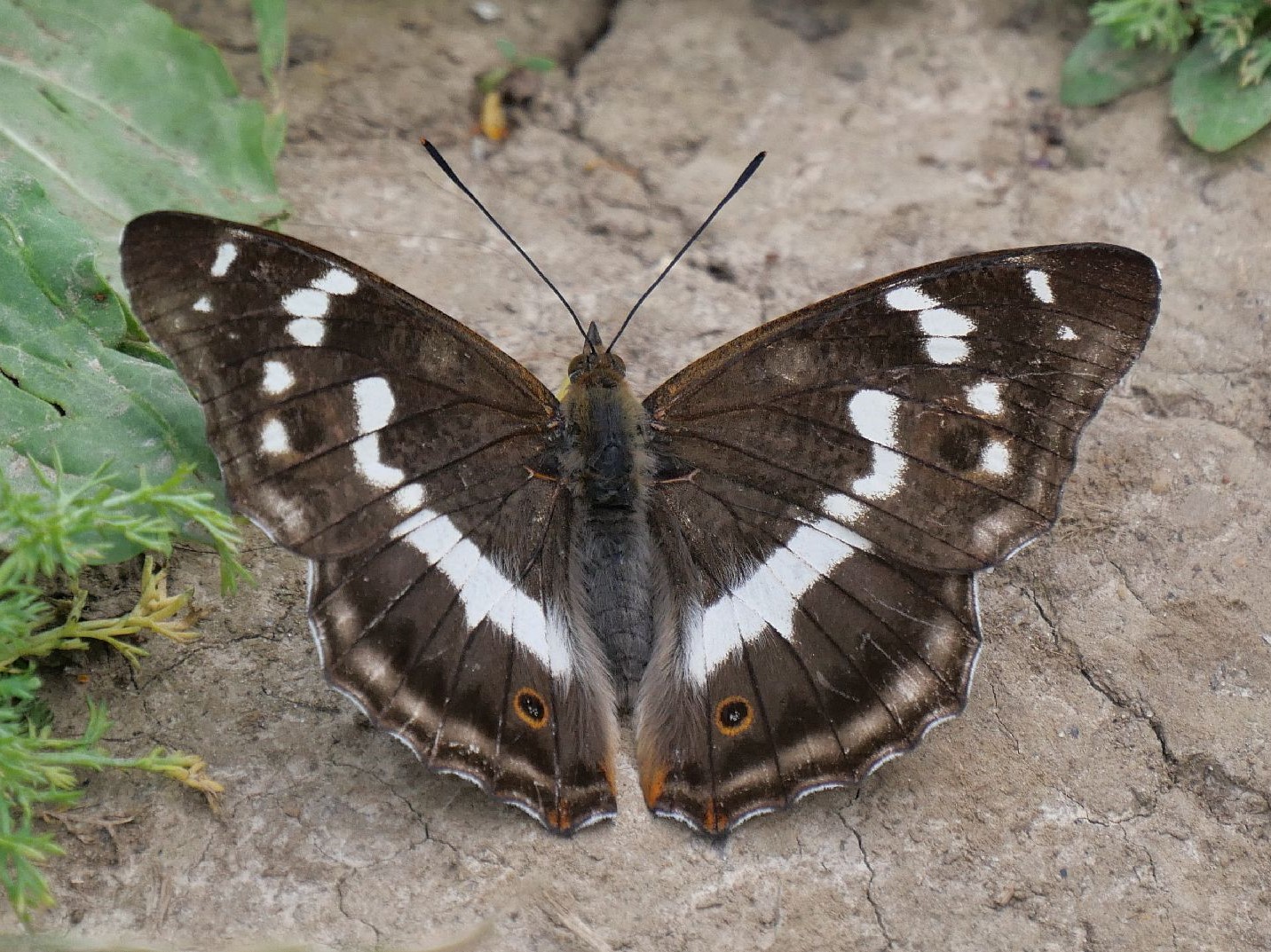
Local and increasing in woodland


Distribution and Status
The Purple Emperor is now more regularly seen in woodland in the two counties. In the 1980s the only confirmed record was in the Hitch Wood area but it is likely that the butterfly existed elsewhere. Due to its elusiveness and presumed rarity many other reports were not accepted. In the 1990s there were sightings at the Broxbourne Woods complex and the last two decades have seen a large expansion starting from the south and the butterfly is now widespread throughout Hertfordshire. There are more reports from Middlesex including Hampstead Heath. The reason might owe to increased recording effort and a greater understanding of the insect's ecology among the butterfly fraternity thanks largely due to the efforts of Liz Goodyear and Andrew Middleton (Goodyear & Middleton)
Habitat Requirements
Large deciduous woodlands although they may occur in small woods if they are part of a larger woodland complex, where sallows are present
Larval Foodplants
Goat Willow Salix caprea. [Crack Willow S. fragilis, Grey Willow S. cinerea]
Adult Food Sources
Buddleia Buddleja davidii, Sweet Chestnut Castanea sativa. Ground/mud/road surface, dung, honeydew, rotten flesh, tree sap
Behaviour/Observation notes
Both sexes spend most of their time in the tree canopy. Males congregate on 'master' trees, usually of oak, at a high point in the landscape from mid morning and establish territories, often reaching a peak of activity at around 1 pm when the sun is at its highest. The territories will often be found on the edges of woodland and sheltered from the prevailing wind so the northern edge of a suitable wood will commonly be selected. Females will lay eggs away from the sunshine, most likely between around noon and 2 pm. To search for females exhibiting such behaviour in sallow bushes in known localities provides the best chance for finding them close-up. Males, in particular, will sometimes descend to the ground early in the day, to take nutrients from animal droppings and even shrimp paste! When engaged in such activity the butterfly is very approachable so good opportunities for taking close-up photographs are possible

Life History
Only one generation a year is produced with emergence from the end of June until early August. The peak of abundance is usually around the first week of July. Females will usually lay eggs singly on the upper surface of a sallow leaf in a sheltered spot. Hatched larvae soon enter hibernation attached to a sallow twig. In the spring they turn green in colour and continue feeding on the sallow leaves before pupating beneath a leaf
Further information
Photo gallery
Matthew Oates' 'Purple Empire' blog
Branch Annual Report (2022)
Comprehensive reports (downloadable) by Liz Goodyear & Andrew Middleton
UK distribution map
Full list of larval hostplants (Nymphalidae)
Stevenage butterflies - additional notes